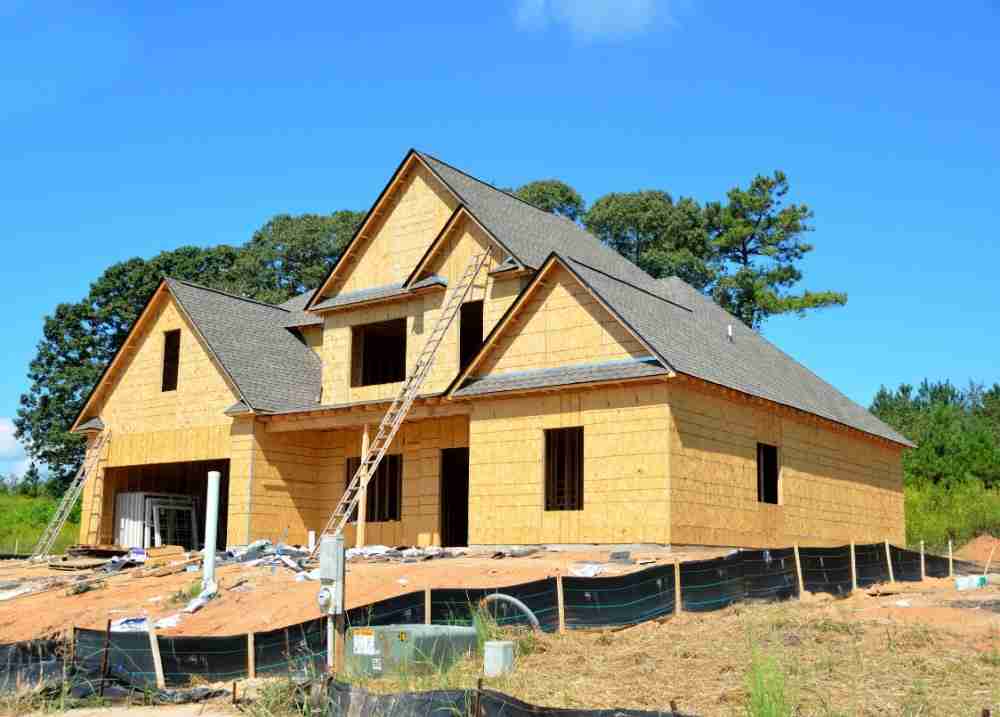The worst nightmare for anyone and their dream home is discovering new house mold problems. Many times people buy a new house so they have don’t have to worry about problems. Knowing they have the assurance of a warranty. Unfortunately, all too often we are seeing homeowners of new houses deal with nightmare problems. Contractors that don’t warrant their work with two increasingly common scenarios.
Builder’s Dissolve Legal Entities After Completion of Subdivision. Thereby Negating all Liability of New House Mold Problems
We have seen a surge over the last 15 years. Builders who strategically close their business entity and establish a new one after a subdivision has been completed. Leaving the homeowners of their newly constructed homes high and dry. The warranty so many were depending on now has become nothing more than a piece of paper. Unfortunately, many of us will spend more time picking out paint colors than we will to properly research the company building our home; thereby, risking our largest monetary investment.
Builder’s Rush Building After Heavy Rains and Cause Significant Mold Damage
This is another common scenario we see. Builders rushing to complete homes after heavy rains. They do not allow for the timber/framing to adequately dry prior to sealing walls. This practice will cause significant new house mold growth throughout the “hidden and sealed areas” of the home. Most often it takes years to discover the problem. We highly recommend the application of antimicrobial sealer on all framing and the use of mold-resistant drywall throughout the home.
Poor Building Practices Are Becoming Common
In addition to the two above mentioned scenarios, we are seeing a common trend in the building industry of cutting corners and minimizing quality. A recent example of this was a large high-end home in an affluent gated community here in the KC metro area. At this property, we ended up tearing out approximately 5,000 square feet of mold due to an undetected water leak last winter. Significant mold damage occurred before the water leak was detected.
The benefits of demolition is that it provides a clear look into the building practices that were employed. We found many scenarios in this one house of cutting corners and completing construction in a poor manner. However, I am sure not with a reduced price tag. This one house we found the following construction problems even with a high-end builder. All of the following problems lead to moisture, rot and mold problems throughout the house:
- Stucco issues caused significant rot and water damage on the exterior plywood and wall framing.
- Ventilation fans lacked outside exhaust. As a result, they caused humidity to circulate within walls and ceilings leading to mold problems.
- Also, the windows were not properly sealed and caulked, which resulted in a large amount of mold damage and wood rot below windows.
- Standard drywall vs. concrete or green board was used in the bathrooms. This is especially problematic behind tile work due to the water exposure in a bathroom.
- Concrete roof had poor flashing installed and caused water damage on the homes interior walls.
Common Areas to Look for New House Mold
- Exposed floor joists in the basement or attic spaces
- Condensation or moisture on exposed foundation, behind vapor barriers or on walls in the basement
- Foundation rim joists (framing meets the top of concrete foundation)
- Around and inside wall or ceiling cavities of ventilation fans
- Attic wood surfaces. Check for an adequate number of vents, breathability and all ventilation exhausted to the outside.
- Sub-floor under carpet and pad, especially on the lower levels.
- Mechanical room. All condensation and drain lines routed to prevent standing water.
Whenever buying a new house, it is best to monitor closely the entire construction process. It is vital than a professional inspector looks at all mechanical, electrical and plumbing lines BEFORE finishes. It is NECESSARY to be involved during the construction project. Be present daily and monitor everything closely. We recommend educating yourself on basic building practices through various online resources. In addition, we recommend the use of quality building materials like mold-resistant drywall, to minimize damage.
